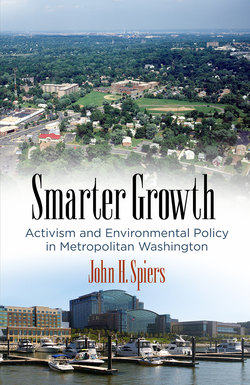Smarter Growth

Реклама. ООО «ЛитРес», ИНН: 7719571260.
Оглавление
John H. Spiers. Smarter Growth
Отрывок из книги
Smarter Growth
Eugenie L. Birch and Susan M. Wachter, Series Editors
.....
Montgomery County benefited from having a more environmentally conscious population and officials committed to a model of compact planning. Montgomery embraced the wedges and corridors model of planning after World War II.58 Under planning board chair Royce Hanson, the county took two major steps to bolster growth management during the 1970s. First, officials adopted an adequate public facilities ordinance that was never struck down, unlike in Northern Virginia. Second, they created a master plan to preserve agriculture and rural land by curbing suburban housing and implementing a program that allowed landowners to sell the right to develop parcels of land in exchange for agreeing to permanent conservation easements.59 Purchasers in this transfer of development rights program could then use their rights to build extra housing in certain areas. Montgomery’s planning measures were quite successful in curbing population growth: while Fairfax’s population increased 31 percent during the 1970s, Montgomery’s rose less than 11 percent.60
The contrast between Fairfax and Montgomery Counties highlighted the importance of state support of local growth regulations for achieving environmental goals.61 In addition, Maryland’s land preservation programs offered funding to local communities for permanent conservation, while Virginia’s employed temporary protections and did not offer funding for conservation easements until 1997.62 State support for growth management, however, still required local commitments for environmental protection to be successful. The influx of working-class African Americans into Prince George’s County during the 1970s spiked property taxes to pay for infrastructure and services. Rather than seeking to slow growth to rein in the cost of supporting it, residents instead voted to cap their property taxes, joining a tax revolt movement that swept across suburban America.63 In the short term, this vote accomplished its fiscal objective. Over the longer term, the tax cap intensified the need to attract commercial development, with two results. First, public officials and residents were more likely to discount the environmental impact of development in order to attract the revenue it offered. Second, local officials undermined the value proposition of growth by offering financial subsidies to try and lure businesses to locate.
.....